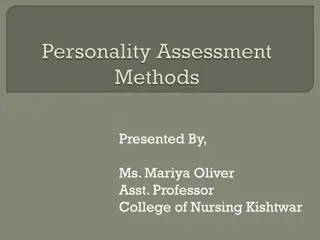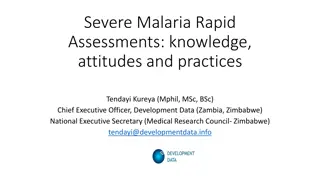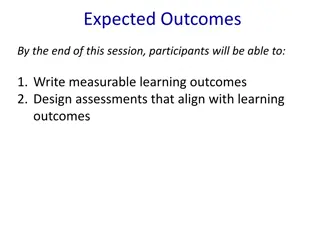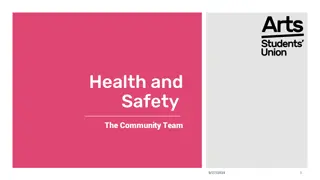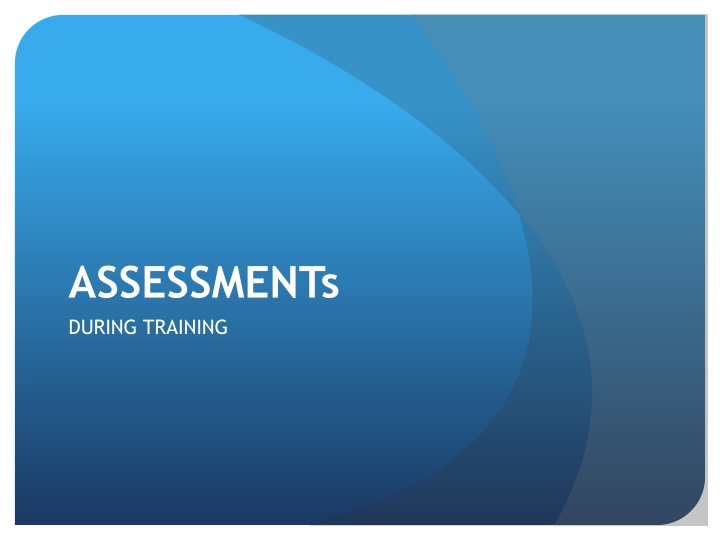
Effective Workplace-Based Assessments for Trainees in Pathology
Learn about the importance of workplace-based assessments in training pathology trainees to ensure competency and satisfactory progress. Discover various assessment methods such as Case-based Discussions (CbD) and Direct Observation of Practical Skills (DOPS), along with the frequency and procedures involved. Documentation using the Learning Environment for Pathology Trainees (LEPT) system is highlighted.
Uploaded on | 10 Views
Download Presentation

Please find below an Image/Link to download the presentation.
The content on the website is provided AS IS for your information and personal use only. It may not be sold, licensed, or shared on other websites without obtaining consent from the author. If you encounter any issues during the download, it is possible that the publisher has removed the file from their server.
You are allowed to download the files provided on this website for personal or commercial use, subject to the condition that they are used lawfully. All files are the property of their respective owners.
The content on the website is provided AS IS for your information and personal use only. It may not be sold, licensed, or shared on other websites without obtaining consent from the author.
E N D
Presentation Transcript
ASSESSMENTs DURING TRAINING
WORK PLACE BASED ASSESSEMENTs OVERVIEW
WPBA Assessing the competency of trainees Ensuring that they are making satisfactory progress Trainees are assessed on work that they are actually doing Assessment is integrated into their day-to-day work All assessments linked to the curriculum
Case-based discussion (CbD) Direct observation of practical skills (DOPS) Evaluation of clinical events (ECE) Mini clinical evaluation exercise (Mini-CEX) Multi-source feedback (MSF)
Frequency of Assessments each year DOPS: minimum of 6 required in ST1 AND 2(Chem Path trainee) ST3 and 4(Chem path and metabolic medicine trainee)
Procedure for Assessment Tool: type of assessment Assessor: wide range Consultants (medical or clinical scientist) staff grade and associated specialists (SAS) senior biomedical scientists (BMS) clinical scientists senior trainee or other healthcare professionals competent in the area being assessed (e.g. nurses)
Level of complexity Low average high Procedure Short (15-20 min) with 5-10min feedback Cover wide range of topics
Documentation of Assessments Workplace-based assessments should be recorded in the Learning Environment for Pathology Trainees (LEPT) system web-based system for WPBA and multi-source feedback (MSF) includes an e-Portfolio to support the ARCP process.
Case based discussion(CbD) Learning Objective To assess decision-making application or use of medical knowledge in relation to the care of patients (clinically or laboratory involvement) general biochemistry diabetes and endocrinology lipidology Nutrition inherited metabolic disease special investigations
Evaluation of clinical events(ECE) Learning Objective: performance in complex tasks Team working or interacting with other professional staff Clinico pathological evaluation Reporting of diagnostic material Presentation of a case at a (MDT) meeting, grand round Quality assurance and audit processes in clinical and laboratory settings. providing clinical biochemistry advice in response to enquiry (primary and secondary care) by letter, by phone preparing a business case writing clinical guidelines appointment of staff (e.g. shortlisting, interviewing)
DIRECT OBSERVATION OF PRACTICAL SKILLS (DOPS) Learning Objective Direct observation of practical skills (DOPS) is used for assessing competence in the practical procedures that trainees undertake To assess the analytical technique, use of laboratory instrument, dynamic function test, trainee led teaching event
Mini Clinical Evaluation Exercise Learning Objective To provide feedback on skills essential to the provision of good clinical care by observing an actual clinical encounter Diabetes Lipids/cardiovascular risk/hypertension Metabolic bone/calcium metabolism Inherited metabolic disease Obesity Parenteral nutrition ward round
MSF MSF assessment in ST1, ST3 and ST5(Chem Path) and ST3,ST5, ST7(Chem Path/Metabolic medicine) MSF can be organised any other time besides above if required








